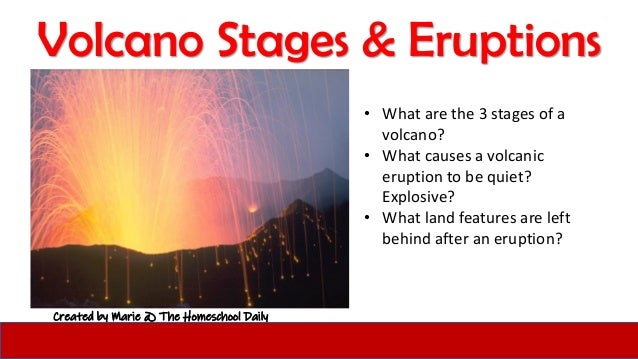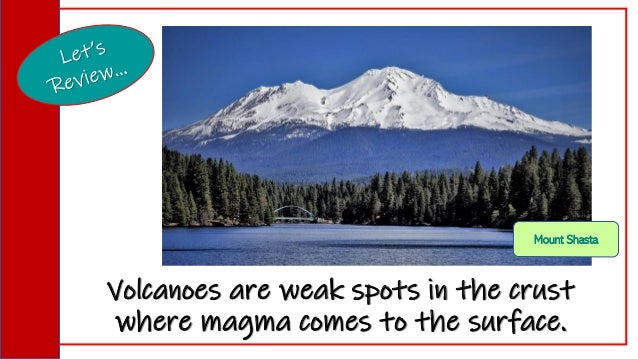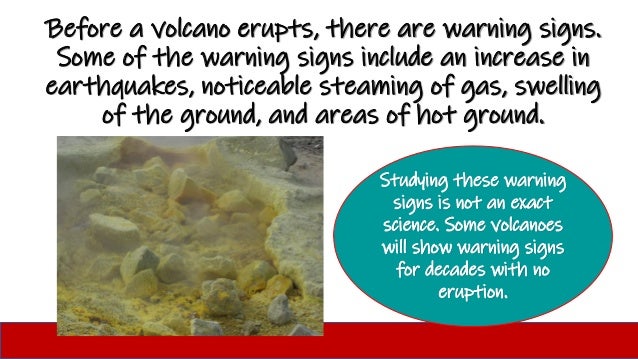Volcanic Activity & Eruptions
- 1. Volcano Stages & Eruptions Created by Marie @ The Homeschool Daily • What are the 3 stages of a volcano? • What causes a volcanic eruption to be quiet? Explosive? • What land features are left behind after an eruption?
- 2. Volcanoes are weak spots in the crust where magma comes to the surface. Mount Shasta
- 3. There are 3 types of volcanoes.
- 4. It doesn’t matter what type of volcano it is. All volcanoes will go through 3 stages of life. Extinct Dormant Active
- 5. All volcanoes will start in the active stage. An active volcano is erupting or has shown signs that it may erupt soon. It can also be called live. There are over 1,500 active volcanoes around the world.
- 6. Before a volcano erupts, there are warning signs. Some of the warning signs include an increase in earthquakes, noticeable steaming of gas, swelling of the ground, and areas of hot ground. Studying these warning signs is not an exact science. Some volcanoes will show warning signs for decades with no eruption.
- 7. A volcano’s eruption will be explosive if it has high amounts of silica and water. This combination does not allow lava to flow smoothly. What makes a volcano eruption explosive? Silica is a material formed from oxygen and silicon. The more silica magma has, the thicker it is.
- 8. A volcano’s eruption will be quiet if there is little water and little silica. This ratio creates smooth- flowing lava. What makes a volcano eruption quiet? Low silica volcanoes produce lots of lava and little ash. Over time, a low silica volcano builds a large broad cone.
- 9. A dormant volcano has not erupted for a long time but is expected to erupt again in the future. It is also called sleeping. Mount Shasta has been dormant for over 200 years. It has been deemed one of the most dangerous volcanoes… a sleeping giant!
- 10. An extinct volcano is unlikely to erupt again. It is called dead. Beware: Some extinct volcanoes have been known to come back to life! Located in Northern Ecuador, Imbabura is an inactive stratovolcano that has not erupted for thousands of years.
- 11. When a volcanic mountain collapses and leaves a HUGE hole, it is called a caldera. Mount Aniakchak in Alaska was a lofty 7,000- foot-tall volcano until its peak collapsed during a massive eruption. Aniakchak Caldera
- 12. A volcanic neck forms when magma hardens in a volcano’s pipe. Over the years, natural forces erode the softer earth around an extinct volcano leaving the volcanic neck or plug visible. Shiprock is a volcanic neck in Navajo Nation, New Mexico.
- 13. Check out our other volcano slideshows at The Homeschool Daily under Science! And though I have the gift of prophecy, and understand all mysteries, and all knowledge; and though I have all faith, so that I could remove mountains, and have not charity, I am nothing. I Corinthians 13:2













